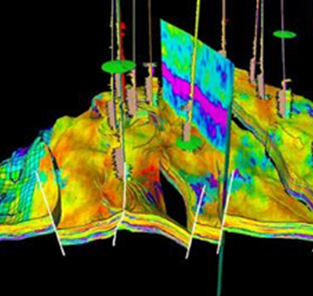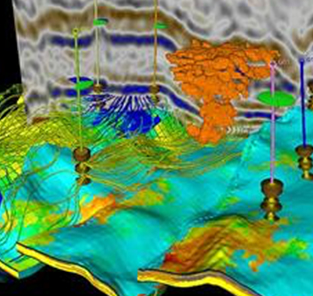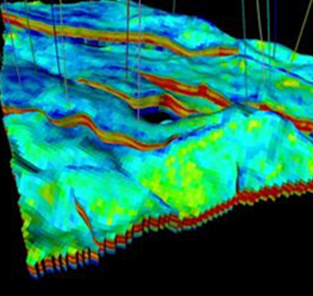Petrel facies modeling is used to populate geocellular grids with discrete property values for geological characterization of the reservoir. It enables both simple and complex workflows—such as seismic-driven modeling in which probabilities can be used in several different ways to help create a realistic representation of the depositional facies or lithologies.
High-resolution well log data and point attribute data can be upscaled into the geocellular grids. Properties are distributed into the remaining 3D grid volume by using a variety of algorithms. Structural grids can model “depositional” properties more accurately using the depospace concept.
Features
- Deterministic modeling algorithms, such as indicator kriging (pixel-based method for producing facies models based on kriging probabilities)
- Interactive editing to draw and intuitively edit facies models, with geological brushes for more realistic depositional environment design
- Stochastic modeling algorithms, such as object modeling, sequential indicator simulation, truncated Gaussian simulation, or multipoint statistics
- Generation of dynamic QA maps
- Ability to save property modeling input parameters as objects to reuse, share, and include in workflows
- Modeling input parameters editor for editing, viewing, exchanging, and reporting of all facies modeling parameters inside a flexible, unified, tabular interface



















